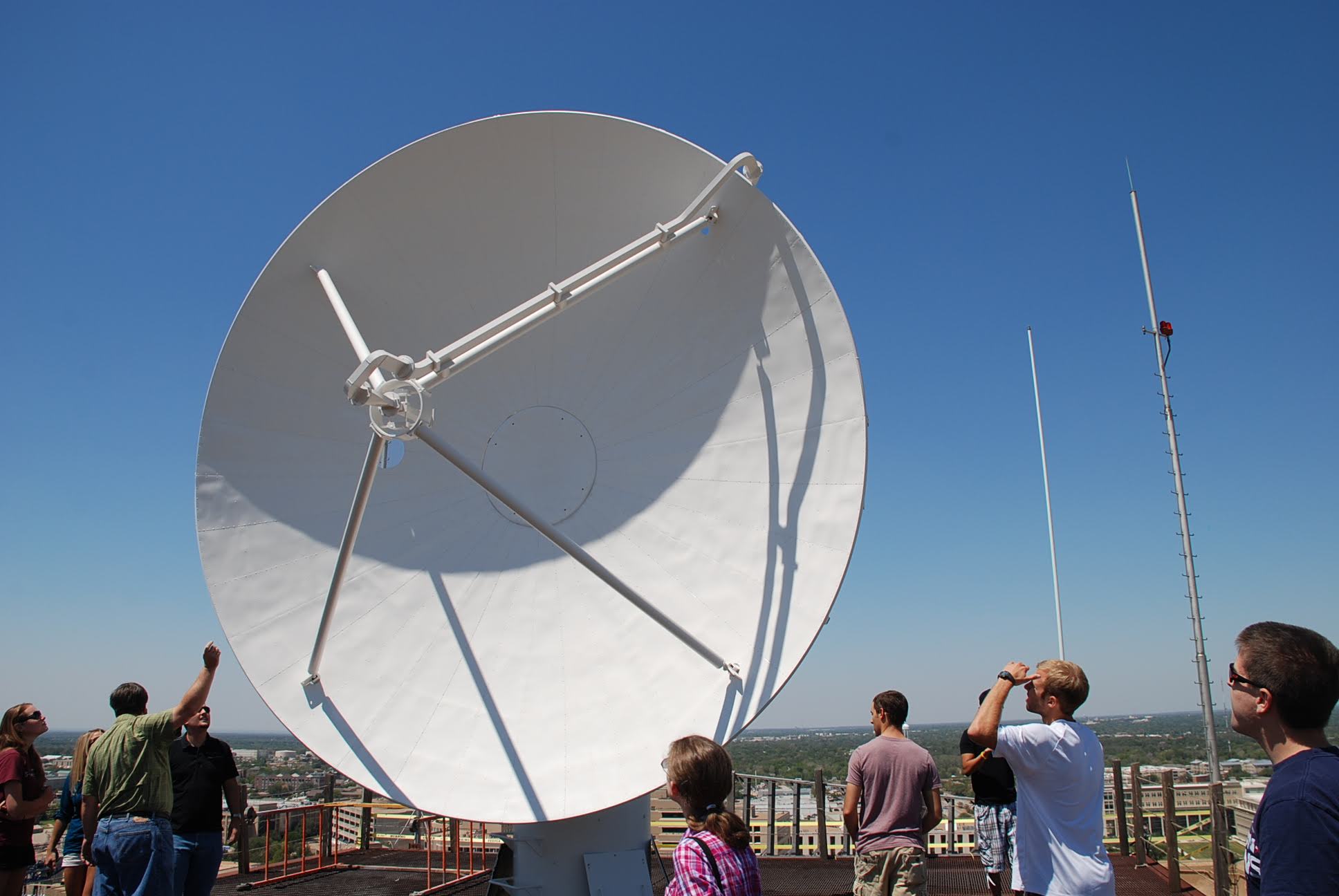
Learn more about the new Climavision radar system
The Aggie Doppler Radar (ADRAD) was the only on-campus S-band Doppler weather radar in the country, located on the roof of the Eller O&M Building with a control station on the 12th floor. In June 2024, ADRAD was replaced with a new dual-polarization radar system as part of a partnership with climate-tech company Climavision, retiring the fixture that had been atop the O&M Building for more than 50 years. TAMU undergraduate and graduate students were trained in hands-on radar operations, providing unparalleled access to a high-quality weather radar system. ADRAD was operated by students during periods of active weather, often serving as a backup observation tool for local National Weather Service forecast offices.
Following modifications to a radar which was used in 1956 to provide the first radar-based tornado warning in history, ADRAD was placed on the roof of the newly built Eller O&M Building in 1973. Over the intervening years, ADRAD has been upgraded with Doppler capability, digitized components and signal processors, and more advanced display capabilities.
ADRAD played a central role in ATMO 443, an upper-level undergraduate radar meteorology course, where students learned to operate the radar, observe hardware in action, design and implement unique scanning strategies, and analyze radar data for assignments and projects. It also served as the focal point of the Student Operational ADRAD Project (SOAP), a high-impact learning experience that provided research data for publications and undergraduate student projects presented at regional and national conferences.
Beyond its educational and research contributions, ADRAD provided a vital public service through the dissemination of radar data. When operational, the latest scans and raw data were available for real-time viewing and analysis in external software, offering valuable insights to the public.
ADRAD SPECIFICATIONS
Transmitter Type: Coaxial Magnetron
Wavelength (frequency): 10.5 cm (2.8 GHz)
Peak Transmitted Power: 1 MW
Reflector Diameter: 4.88 m (16 ft)
Beamwidth: 1.5 degrees
Maximum Azimuthal Scanning Rate: 27 degrees per second
Maximum Range: 260 km
Data products: Reflectivity, Doppler Velocity, Spectrum Width
